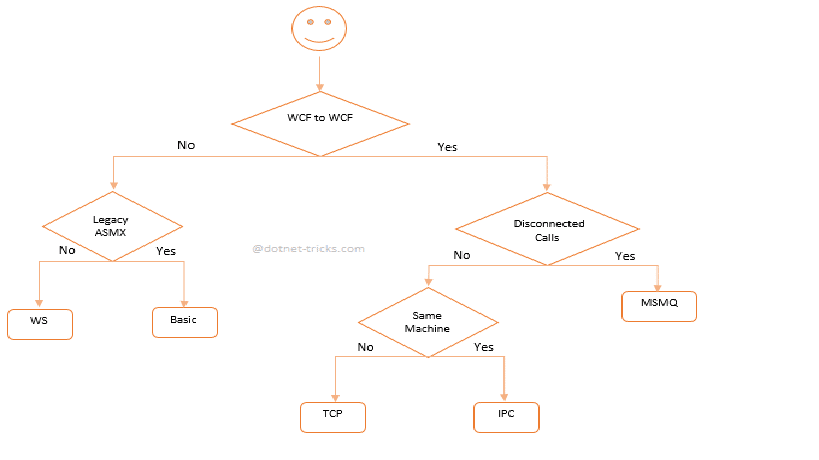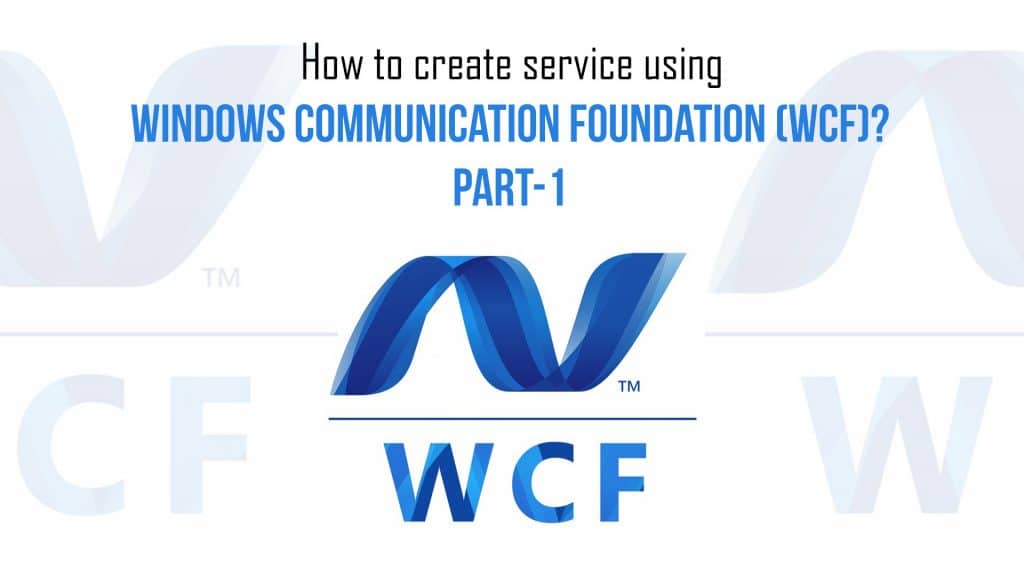This post basically deals with a detailed explanation of the Windows Communication Foundation and its basic concept. We all know that WCF is very useful functionality for every mobile and web application. Using WCF, a lightweight and secure application can be built by different end-users.
Jump to Section
About Windows Communication Foundation (WCF)
Windows Communication Foundation has its code name Indigo. It is a programming platform that allows the creation of new service and runtime systems for building, configuring, and deploying network-distributed services. Actually, WCF is the latest service-oriented technology.
The most fundamental characteristic of WCF is Interoperability. Actually, the windows communication foundation is a unified programming model provided in .Net Framework 3.0.
Basically, WCF service is a combined feature of Web Service, Remoting, MSMQ as well as COM+. The WCF service provides a common platform for all .NET communication. We can create a WCF application using Microsoft visual studio’s latest version.
The WCF service supports different technologies. Refer to the below figure to know the difference:

Source: dotnet-tricks.com
Advantages of WCF
WCF is interoperable with other services in comparison to .Net Remoting, whereas the client and service both have to be on .Net.
- The WCF services provide us better reliability and better security in comparison to ASMX web services.
- WCF service can be termed as the most secured service. That’s why in WCF, there is no need to make more changes in the source code for implementing the security model as well as changing the binding. We do small changes in our configuration file and it makes our service more secure.
- WCF has an integrated logging mechanism. Changing the configuration file settings will provide this functionality. Basically, in other technology, the developer has to write the code.
Disadvantages of WCF
In WCF, according to our requirements, it is very difficult to make the right design.
Difference Between WCF and Web Services
The web service is a part of WCF. The WCF service provides much more flexibility and portability for service development in comparison to web services. That’s the reason it is mostly used by users. WCF and web service are quite different. WCF service is the latest service that provides more advantages over Web service.
The table below provides a detailed difference between them:
| Features | Web Service | WCF |
| Hosting | Basically, It can be hosted in IIS | Actually, It can also be hosted in IIS, windows activation service, Self-hosting, Windows service |
| Programming | [WebService] attribute set on the top of a class. | [ServiceContraact] attribute has set on the top of a class. |
| Model | [WebMethod] attribute refers to the service method that exposed to the client | [OperationContract] attribute refers to the service method that exposed to the client |
| Operation | One-way, Request-Response are the different operations supported in web service | One-Way, Request-Response as well as Duplex are different type of operations supported in WCF |
| XML | System.XML.serialization namespace is used for serialization | Actually, System.Runtime.Serialization namespace is used for serialization |
| Encoding | XML 1.0, MTOM(Message Transmission Optimization Mechanism), DIME, Custom | XML 1.0, MTOM, Binary, Custom |
| Transports | Can be accessed through HTTP, TCP, Custom | Can be accessed through HTTP, TCP, Named pipes, MSMQ, P2P as well as Custom |
| Protocols | Security | Security, Reliable messaging as well as Transactions |
Different Types of WCF bindings
The windows communication foundation uses built-in bindings to fulfill a user-specific requirement. A custom binding is used in many ways for goal fulfillment.
We have used System.ServiceModel Namespace for all inbuilt bindings in WCF. Actually, ten built-in bindings are used in WCF:
1. Basic binding
In the basic binding, we are using the BasicHttpBinding class. This service uses ASMX service as a WCF service. Now, our older service which is using ASMX web service can consume new service.
This binding by default used HTTP as well as HTTPS protocol using HTTP protocol for transport and encode the message in UTF 8 text format. Basic binding also allows the use of HTTPS.
2. Web Binding
The web binding is designed for services as an HTTP request by using HTTP-GET as well as HTTP-POST. Inputs including XML or JSON format can be easily derived with the use of this binding along with REST-based services.
This is very much used with social networks for implementing a syndication feed. Consequently, in this binding, we are using the WebHttpBinding class.
3. Web Service (WS) binding
The web service bindings provide us with many WS – * specifications including WS – Reliable Messaging, WS – Transactions, WS – Security, and many more, which are supported by Basic binding. This binding is a combination of basic binding and web service specification.
In web service binding, we use the WSHttpBinding class. This service is the same as Basic binding and uses HTTP as well as HTTPS protocols for transport.
For example:- wsHttpBinding= basicHttpBinding + WS-* specification
4. WS Dual binding
In web service dual binding, we use the WsDualHttpBinding class. Web Service dual binding supports bi-directional communication. It allows clients and services to send and receive messages. This functionality is similar to wsHttpBinding.
5. TCP binding
In TCP binding, we are using the NetTcpBinding class. TCP protocol uses this binding for communication between two machines on the same network. This binding encodes the message in binary format.
The TCP bindings are much faster and more reliable binding as compared to the other, and HTTP protocol, bindings. This service offers a WCF to WCF communication for client and service provider.
6. IPC binding
This binding uses a named pipe for communication between two services on the same machine. The IPC binding is the most secure as well as fast binding as compared to all the bindings. In fact, IPC binding uses the NetNamedPipeBinding class for its processing.
7. MSMQ binding
This binding is using MSMQ for transport and offers support to disconnected messages queued. In these bindings, in fact, we use the NetMsmqBinding class. The MSMQ binding is very useful because it gives us the facility for disconnected scenarios in which the service processes the message at a different time in comparison with the message time send by the client.
8. Federated WS binding
This is a specialized form of web Service binding as well as provides support to federated security. In fact, in these bindings, we use the WSFederationHttpBinding class.
9. Peer Network binding
In peer network binding, we are using a NetPeerTcpBinding class. This binding uses TCP protocol because it uses peer networking as a transport. In this networking, each node acts as a client as well as a server to the other nodes. The tool named torrent uses this binding service because of the file-sharing systems.
10. MSMQ Integration binding
MsmqIntegrationBinding class uses the format of MSMQ integration binding. This binding offers support to communicate with existing systems that communicate via MSMQ.
Concluding Words
I hope this article will help you understand Windows Communication Foundation, its advantages, and bindings types. In my next post, I will describe WCF architecture, the service-oriented architecture concept, and other things.
- Business Intelligence Vs Data Analytics: What’s the Difference? - December 10, 2020
- Effective Ways Data Analytics Helps Improve Business Growth - July 28, 2020
- How the Automotive Industry is Benefitting From Web Scraping - July 23, 2020


